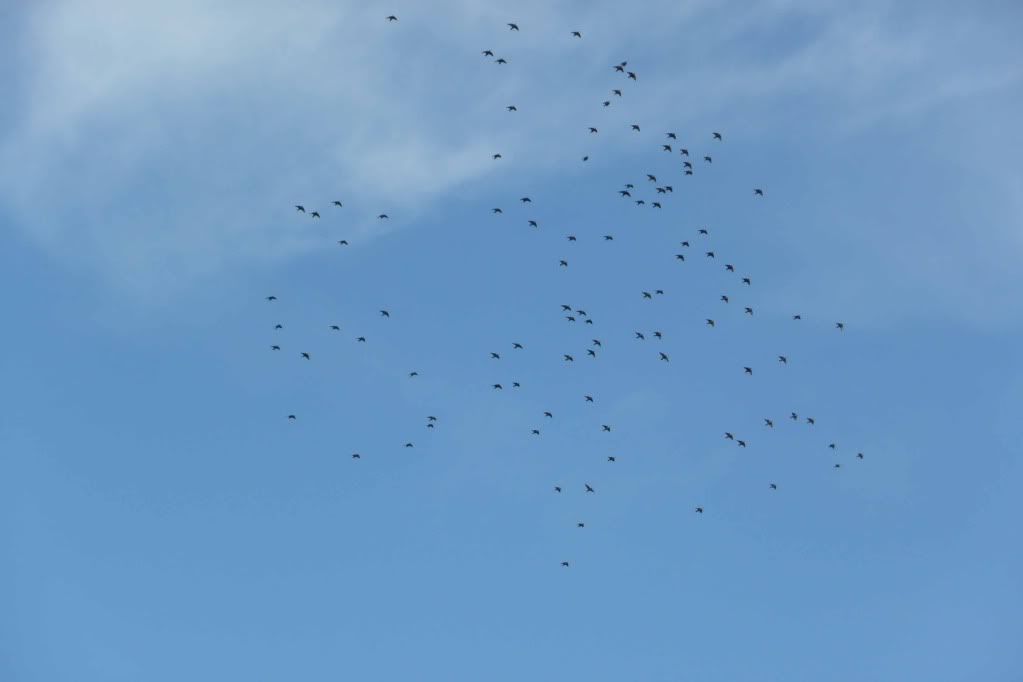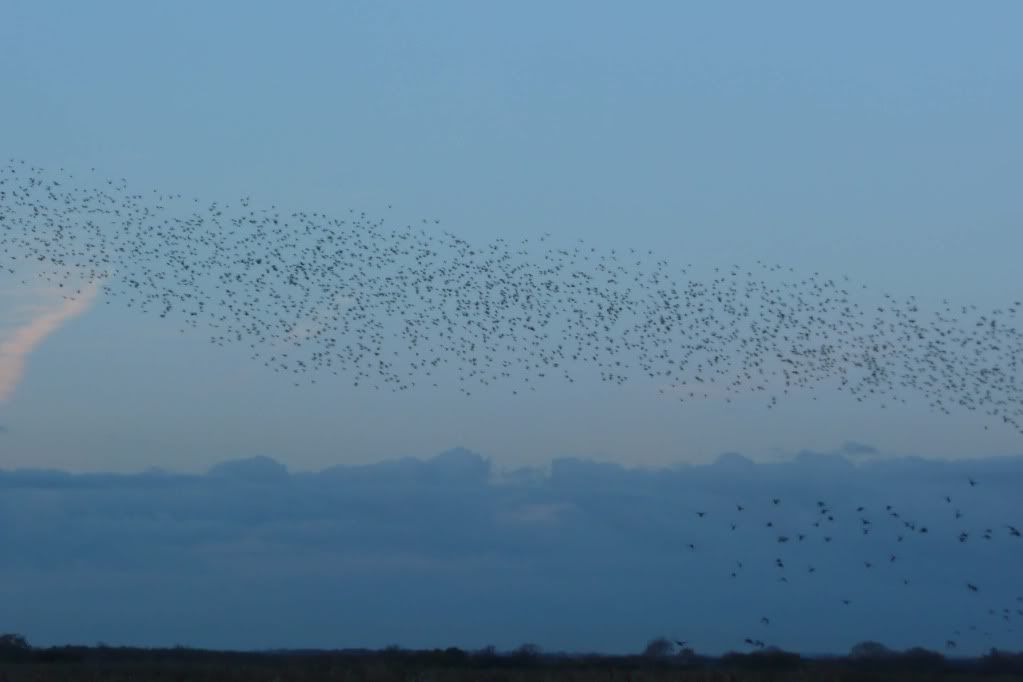.
.
Before roosting, probably in the nearby hedges, or when they're startled by a passing sparrowhawk they form flocks which can be quite impressive, consisting of probably more than 100 birds.
.
.
However, for truley impressive murmurations (the collective name for starlings) in Oxfordshire is the RSPB reserve at Otmoor, just north of Oxford, where the flocks can consist of thousands birds:
.
.
As autumn turns into winter and more and more migrants move to the area, the display can become so impressive as the murmations now consist of hundreds of thousands of birds and these gatherings are now so popular that the RSPB are holding organised walks on 14th and 28th September
Seeing such vast numbers, it is hard to believe they are classified as red listed by the RSPB (a bird of high conservation concern) as starling numbers have declined by 60% since the 1970's. This decline is blamed on the change to mixed farming, a decline in their food sources like leatherjackets (the larvae of craneflies) and a loss of nesting sites. This is despite starling numbers actually increasing dramatically since the 1800's as europe moved to more managed agriculture.
Despite this decline, hopefully sites like Otmoor will continue to host displays that are so impressive they make you want to burst into a spontaneous round of applause:
.
.
The BBC website has some very interesting information on murmurations as well as some impressive footage: http://news.bbc.co.uk/earth/hi/earth_news/newsid_9175000/9175793.stm



Here in the US, European Starlings are all too abundant. It gives me a new perspective to read that in Britain there are now sponsored bird walks just to watch starlings! I've really enjoyed your blog.
ReplyDeleteWhat is ironic is the starling walks were cancelled - due to lack of starlings.
ReplyDelete